Mesoamerica

Among the Precolumbian cultures of Mesoamerica elaborate burial traditions developed in which the elite were adorned with precious objects that marked their rank and status and served as passports to the Underworld. Jade, gold, turquoise, obsidian, shell, bone, and crystal were used to make beads, necklaces, pendants, earspools, earrings, and nose rings. Unlike our culture where one can wear “designer” jewelry and adornment, only individuals entitled by birth and rank were permitted to wear jade and gold.
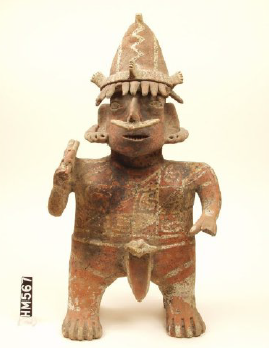
Nayarit Warrior with Body Ornamentation
200 BC to AD 500
This ceramic figure from Ixtlan del Rio has multiple earrings as well as a large nose ring. The body designs on his torso may represent tattoos.
William P. Palmer, III Collection
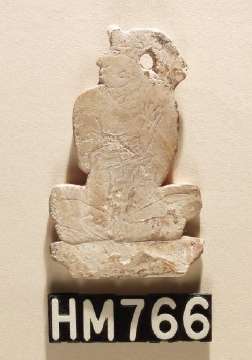
Maya Carved Shell Pendant
AD 600-900
Featuring a seated dignitary wearing a headdress, necklace, bracelets and earspools.
William P. Palmer, III Collection
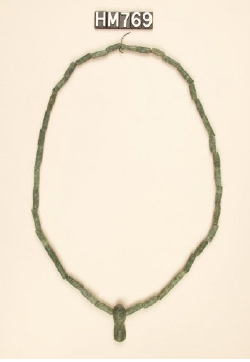
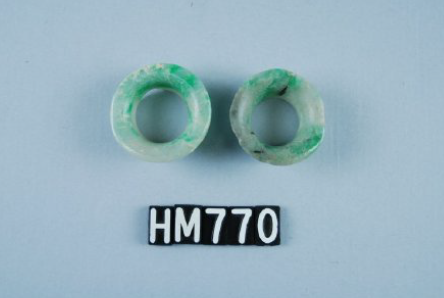
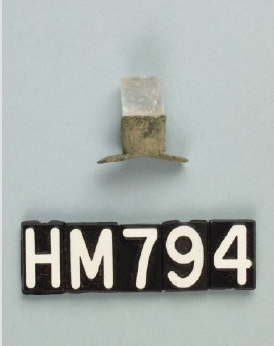
Lip Plug from Western Mexico
This lip ornament from Michoacan includes copper and quartz crystal.
William P. Palmer, III Collection
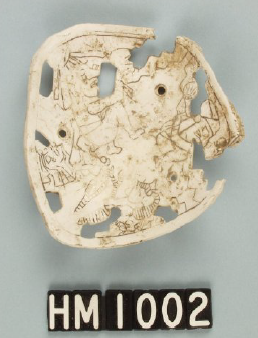
Huastec Shell Pendant
AD 900 – 1460
The pendant features dancers holding a skull.
William P. Palmer, III Collection
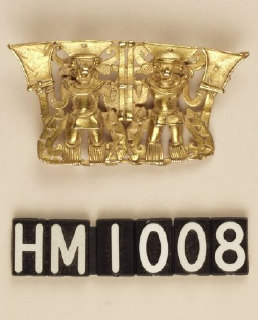
Coclé Gold Alligator Deities
1000-1200 AD
This lost wax cast tumbaga pendant from Panama features twin figures that combine human bodies with saurian/bat heads.
William P. Palmer, III Collection
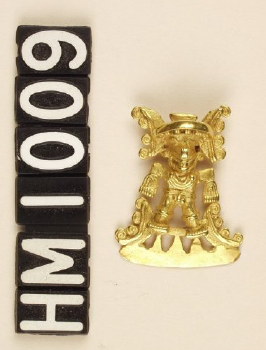
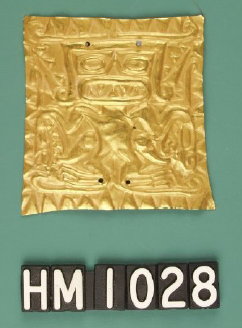
Coclé Hammered Gold Plaque
AD 1000 – 1200
This square ornament features a saurian design.
William P. Palmer, III Collection
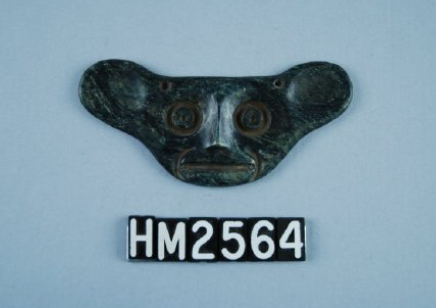
Greenstone Howler Monkey Pendant
300 BC – AD 300
The pendant features one of the monkey twins, either Hun Batz or Hun Chowen – deities of the arts and patrons of artisans.
Cedric Marks Collection
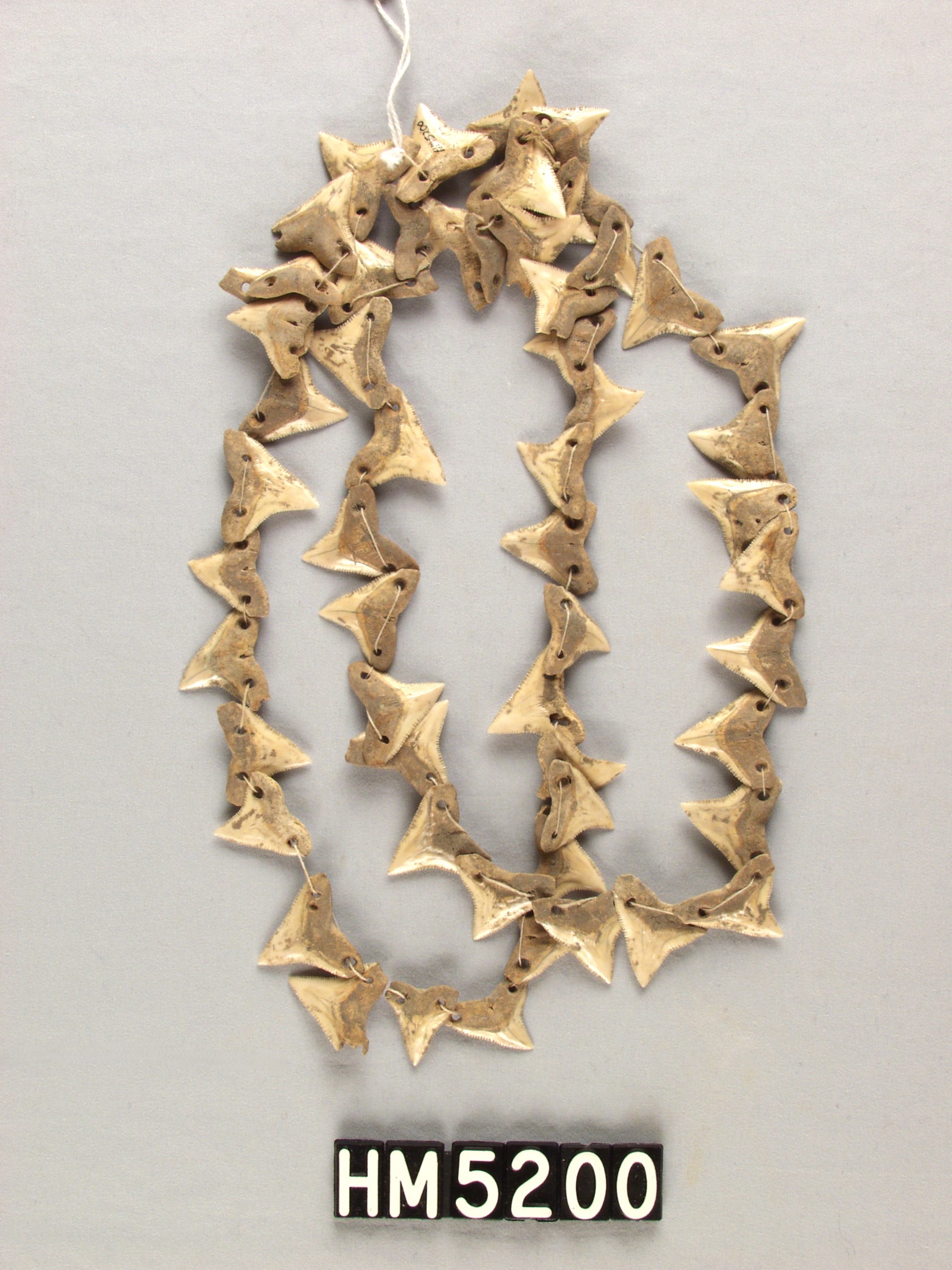
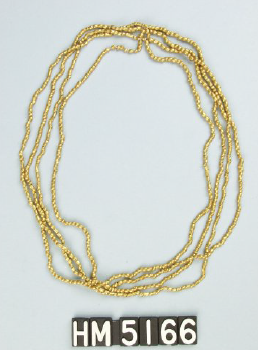
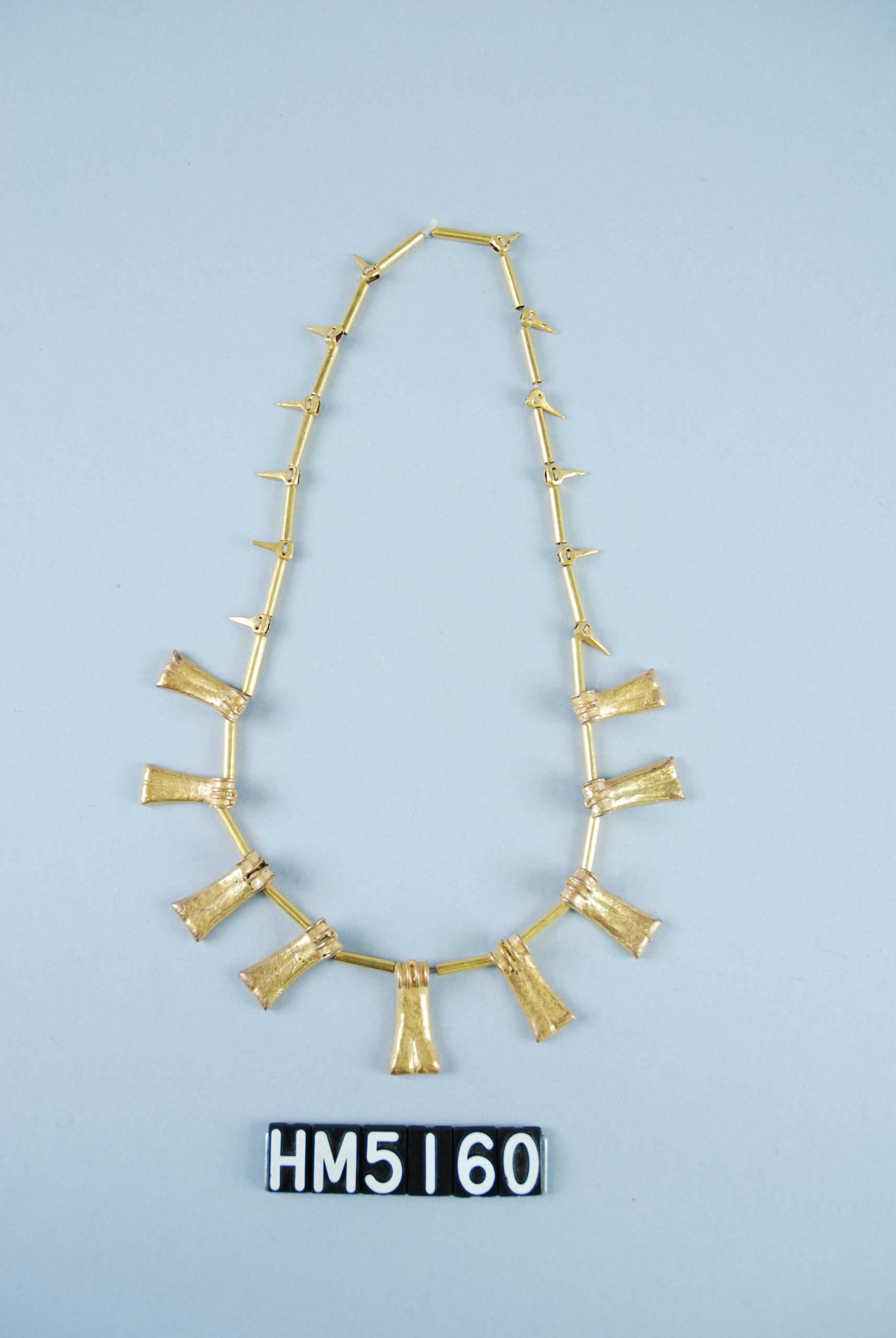
Coclé Gold Necklace
AD 1–500
The small pointed forms may represent shark’s teeth, while the larger pieces may be stylized phalanges (finger bones).
William P. Palmer, III Collection
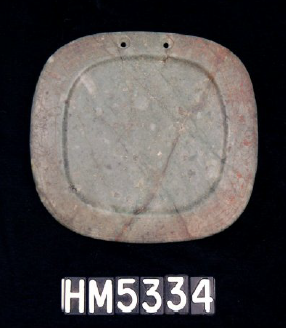
Olmec Double-Headed Snake Pendant
1150 – 400 BC
The pendant is in the form of a concave mirror and depicts a common Mesoamerican design motif featuring a double-headed snake. Incised areas are highlighted with powdered cinnabar, a mercury compound.
Cedric Marks Collection
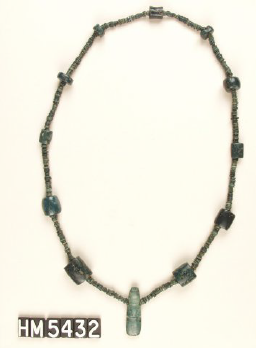
Greenstone Necklace from Costa Rica
The central pendant represents a celt, a stone ax form.
William P. Palmer, III Collection
